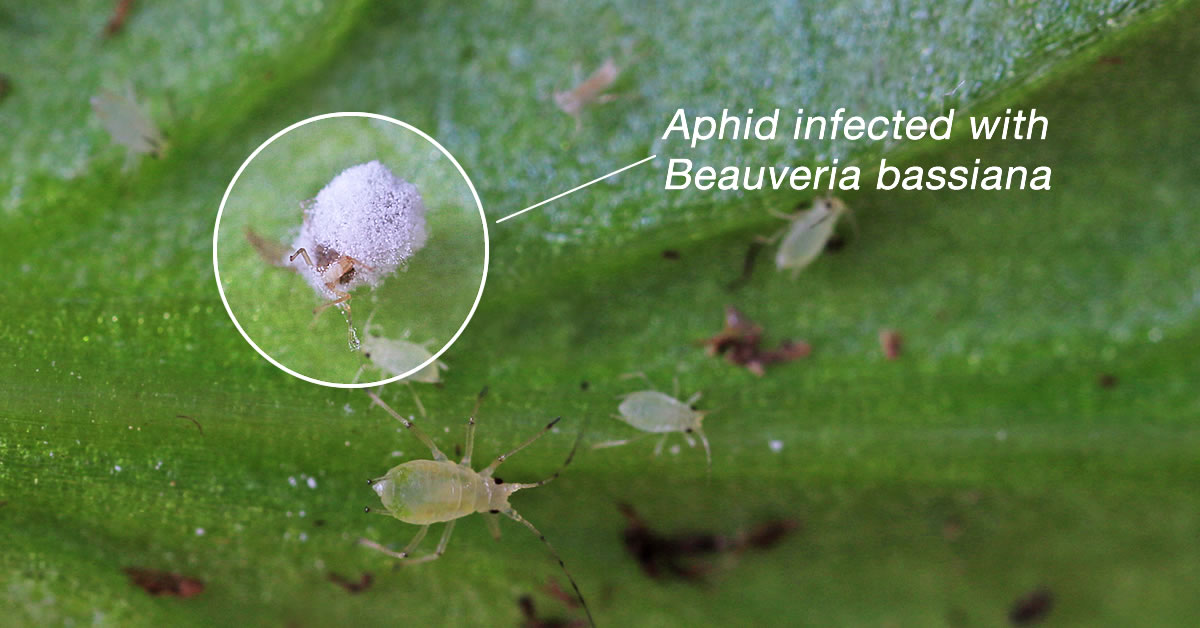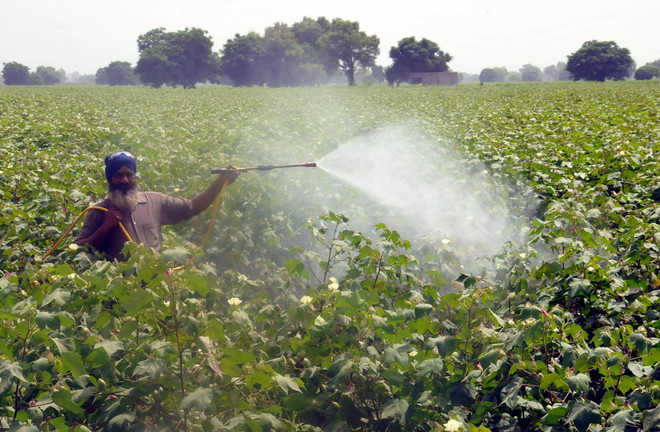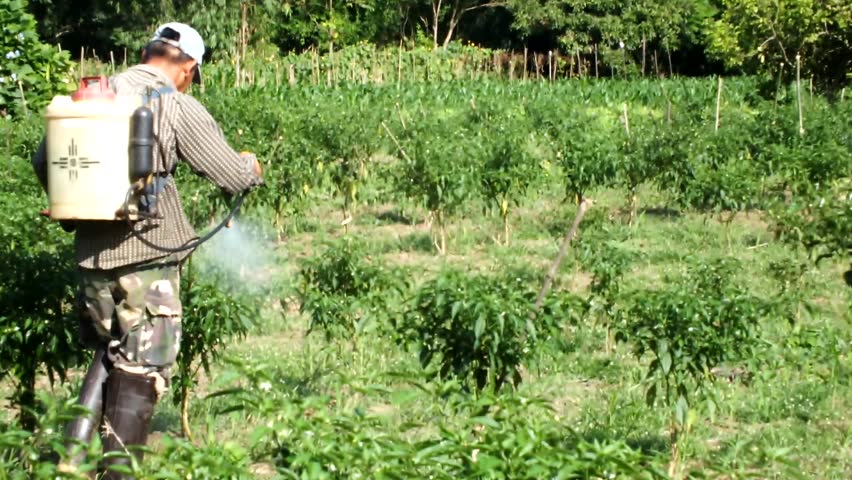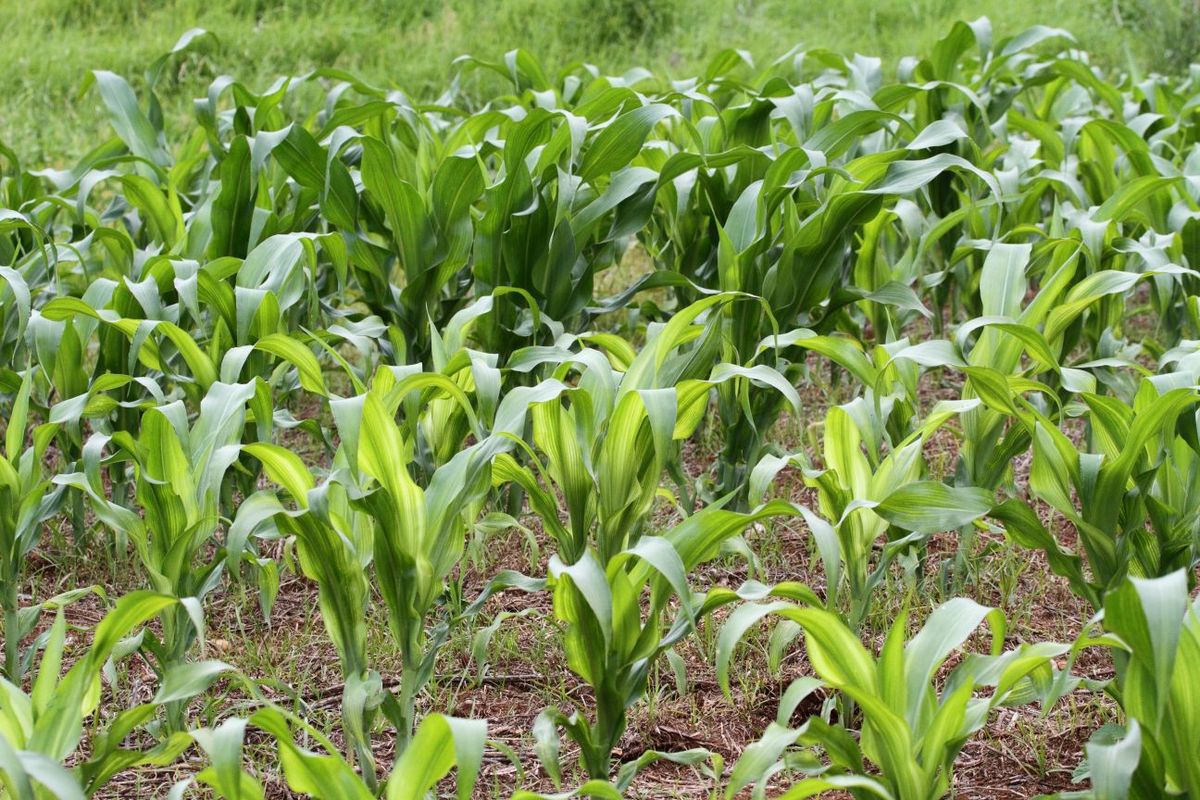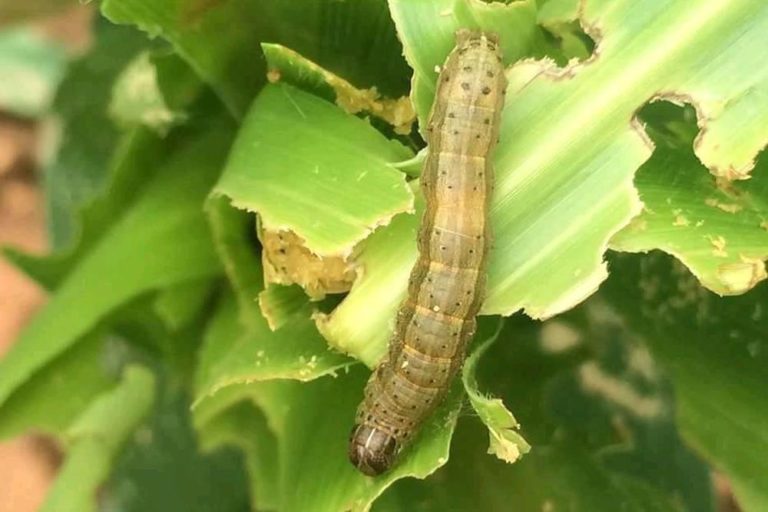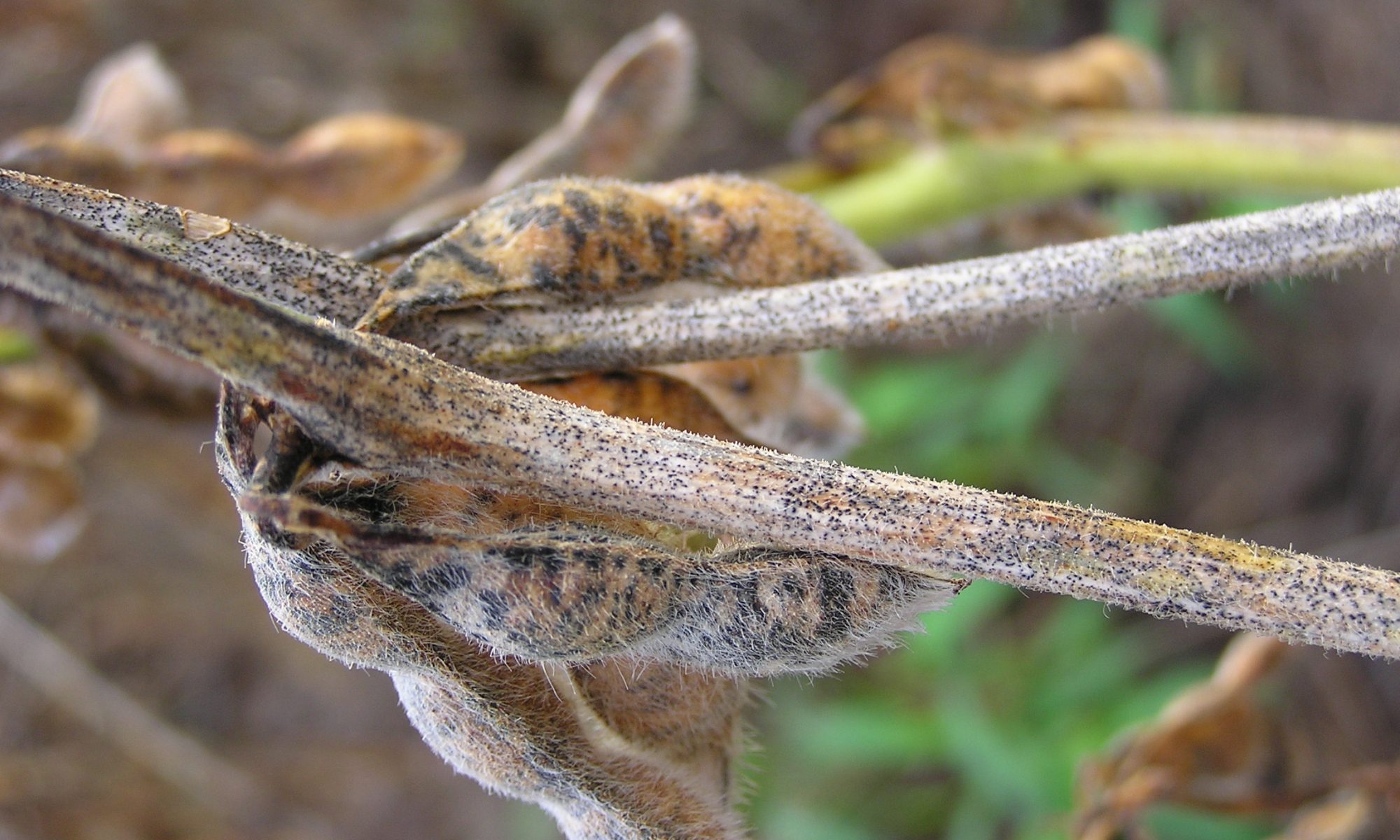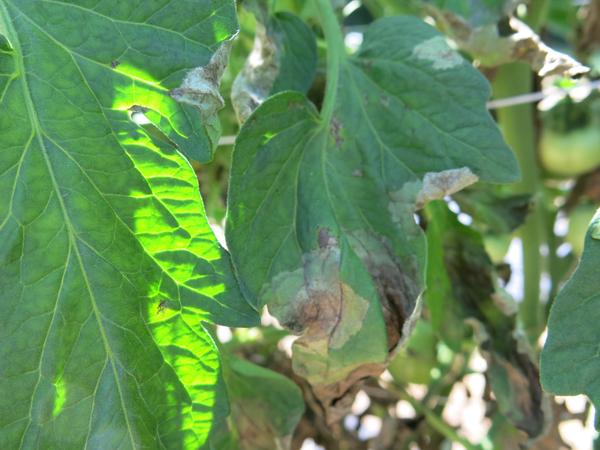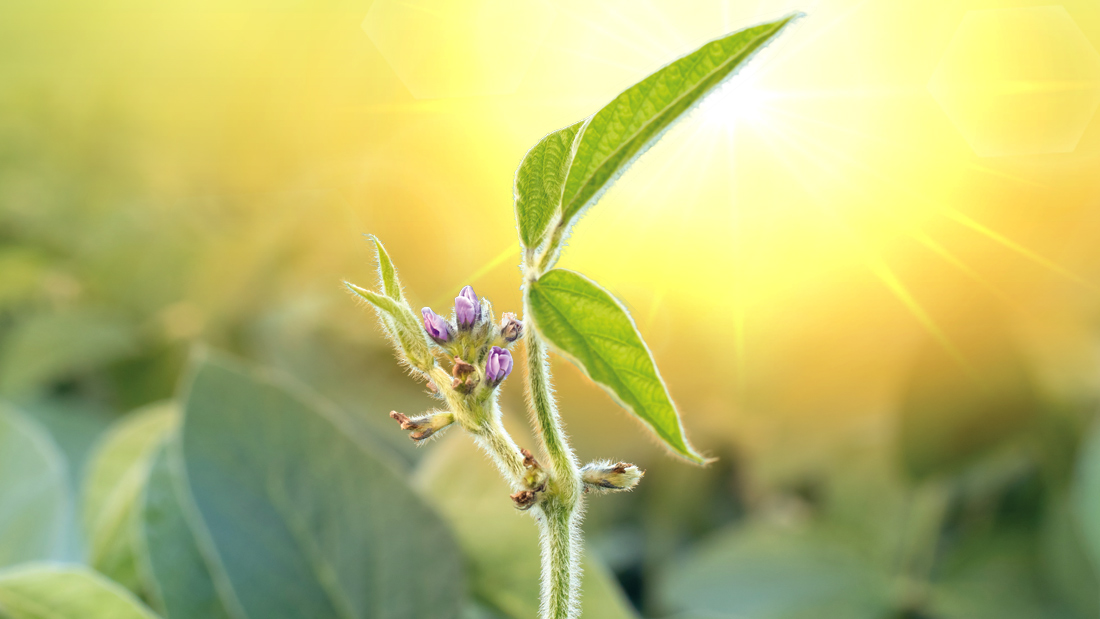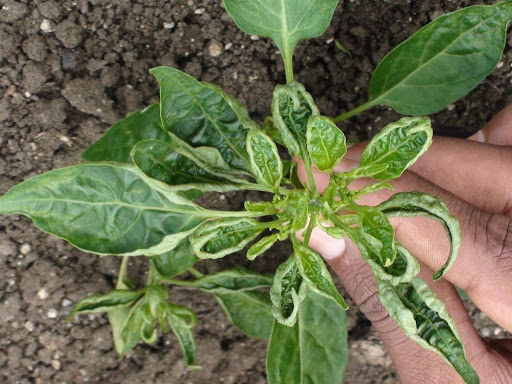- Beauveria Bassiana is a type of fungus which acts as a biological insecticide.
- It is used to control all types of pests in all crops.
- Beauveria Bassiana is used for the control of different types of Lepidoptera (such as gram pod borer, hairy caterpillar) sucking pest, aphid, Jassid , white fly, termite and Mites etc.
- It kills all the stages of insects like eggs, larvae, pupa, grubs and nymphs etc.
- Beauveria Bassiana can be used as a spray because it works by eliminating the sucking pests and caterpillars sticking on the crop leaves.
- It can also be used as soil treatment because it plays an important role in the control of soil borne insects present in the soil.
Spray management in Cotton Crop in 60-80 days
- In cotton, a large variety of caterpillars and sucking pests attack.
- Along with these pests, some fungal and bacterial diseases also greatly affect the cotton crop.
- Caterpillar management: – PROFENOFOS 40 % + CYPERMETHRIN 4% EC @ 400 ml / acre or FENPROPATHRIN 10% EC @ 400 ml / acre or NOVALURAN 5.25 %+ EMAMECTIN BENZOATE 0.9 SC @ 600 ml / acre or MONOCROTOPHOS 36% SL@ 400 ml / acre or CHLORANTRANILIPROLE 18.5 % SC @ 60 ml / acre.
- Sucking pest management: – DIAFENTHIURON 50 % WP @ 250 gram / acre or PYRIPROXYFEN 10 % + BIFENTHRIN 10% EC @ 250 ml / acre or IMIDACLOPRID 17.8% SL @ 100 ml / acre
- As a biological treatment using BEAUVERIA BASSIANA@ 250 gram /acre.
- For disease management use HEXACONAZOLE 5% SC @ 300 ml / acre or THIOPHANATE METHYL 70% WP @ 300 gram / acre or KASUGAMYCIN 3% SL @ 400 ml / acre
- As a biological treatment Spray PSEUDOMONAS FLUORESCENS @ 250 gram / acre
- Nutrition Management: – For good growth in chilli crop, spray AMINO ACID @ 300 ml / acre + 00:52:34 @ 1kg / acre
Spray management in chilli crop in 60-80 days
- Chilli plants face a lot of attacks from insects like sucking pests and caterpillars,
- Along with these pests, some fungal and bacterial diseases also greatly affect the chilli crop.
Following products are used to manage them
- Sucking pest management: – IMIDACLOPRID 17.8% SL @ 100 ml / acre or ACETAMIPRID 20 % SP @ 100 gram / acre or SPINOSAD 45 % SC @ 60 ml / acre
- Caterpillar management: – PROFENOFOS 40 % + CYPERMETHRIN 4% EC @ 400 ml / acre or FENPROPATHRIN 10% EC @ 400 ml / acre or NOVALURAN 5.25 %+ EMAMECTIN BENZOATE 0.9 SC @ 600 ml / acre or CHLORANTRANILIPROLE 18.5 % SC @ 60 ml / acre.
- As biological treatment Spray BEAUVERIA BASSIANA @ 250 gram / acre
- Disease Management: -HEXACONAZOLE 5% SC @ 300 ml / acre or THIOPHANATE METHYL 70% WP @ 300 gram / acre or KASUGAMYCIN 3% SL @ 400 ml / acre
- As a biological treatment Spray PSEUDOMONAS FLUORESCENS @ 250 gram / acre
- Nutrition Management: – For good growth in chilli crop, spray AMINO ACID @ 300 ml / acre + 00:00:50 @ 1 kg / acre
Share
Management of Aphid and Ear Head Bug in Maize
- Ear head Bug: Ear head bug nymphs and adults suck the sap present inside the grain causing the grains to shrink and turn black in color.
- Aphid: A small insect which causes damage to the plant by sucking it from the lower surface of the leaf they can cause a lot of damage.
- Following products can be used to control it:
- PROFENOFOS 50 % EC @ 500 ml / acre or ACETAMIPRID 20 % SP @ 100 gram / acre or ACEPHATE 50 %+ IMIDACLOPRID 1.8 %SP @ 400 gram / acre.
Management of Fall Armyworm in Maize
- This insect hides in piles of soil, straw, weeds during the day, and eats crops overnight. Huge numbers of these insects can be seen in infested farms/crops. This pest tends to damage the entire crop by feeding in a very short time. Hence management/control of this pest is very necessary.
- In areas where the infestation of fall armyworm pests is high, spraying any of the following insecticides should be done immediately.
- Spray: – LAMBDA CYHALOTHRIN 4.6% + CHLORANTRANILIPROLE 9.3% ZC 100 ml / acre, or CHLORANTRANILIPROLE18.5% SC @ 60 ml / acre, or EMAMECTIN BENZOATE 5% SG @ 100 gram / acre
- Biological treatment BEAUVERIA BASSIANA @ 250 gram/acre
- In areas where its attack is less, Farmers should place small piles of straw on the border of their farmland or in the middle of the field if possible. During the day the armyworm hides in these straw piles in search of shade. In the evening this straw should be collected and burnt.
Anthracnose / Pod Blight in Soybean
- In this disease mainly the stem of the plant is infected.
- This infection is visible on the stem during the maturity of soybean crop.
- In this disease, irregular shaped spots appear on the leaves.
- Management: – Spray TEBUCONAZOLE 10% + SULPHUR(S) 65% WG @ 500 gram / acre and CARBENDAZIM 1 2% + MANCOZEB 63% @ 300 gram / acre and THIOPHANATE METHYL 70% W/W @ 300 gram / acre
- As a biological treatment TRICHODERMA VIRIDE @ 500 gram / acre or PSEUDOMONAS FLUORESCENS @ 250 gram / acre
Late Blight in Tomato Crop
- In tomatoes, late blight is a significant disease.
- It is a fungal disease, symptoms of this disease first appear on tomato leaves.
- Violet brown spots are formed on the upper surface of the leaves and brownish white spots appear on the lower surface of the leaves.
- Due to its infection the leaf becomes dry and gradually this fungus spreads on the whole plant.
- Following products can be used for its management
- AZOXYSTROBIN 11% + TEBUCNAZOLE 18.3% SC @ 300gram / acre or MANCOZEB 8%+ METALAXYL 64% WP @ 600gram / acre or TEBUCNAZOLE 50%+ TRIFLOXYSTROBIN 25% WG @ 150gram / acre
- As a biological treatment PSEUDOMONAS FLUORESCENS @ 250 gram / acre
Crop Management in Soybean in the flowering stage
- Crop management is very crucial in the flowering stage of soybean crop.
- There is always a chance of an attack of insect-borne and fungal-borne diseases in the soybean crop regardless of the rainfall being heavy or low.
- Excessive rain can cause flowers to fall while in less rain the plant can get under stress in both the situations hinder the production of flowers.
- For disease management SprayTEBUCONAZOLE 10% + SULPHUR(S) 65% WG @ 500gram / acre or KASUGAMYCIN 5% + COPPER OXYCHLORIDE 45% WP @ 300gram / acre or THIOPHANATE METHYL 70% W/W @ 300gram / acre or CARBENDAZIM 12% + MANCOZEB 63%WP @ 300 gram / acre
- For pest management, spray use ACETAMIPRID 20 % SP @ 100 gram / acre with CHLORANTRANILIPROLE 18.5 % SC @ 60 ml / acre or LAMBDA CYHALOTHRIN 4.6% + CHOLRANTRANILIPROL 9.3%ZC @ 80 ml / acre.
- Growth and development: Nutrients should be provided to the plant in proper quantity and at the right time to facilitate the growth of good flowers which would increase the possibility of the growth of good fruits, hence in the stage of flowering, spray 00:00:50 @ 1 kg/acre.
How to take care of soybean crops in low rainfall?
- We all are aware how the climate is changing these days.
- This shifting pattern of weather makes heavy rainfall in some areas and low rainfall in others, it is in these areas of low rainfall that soybean crop is being affected drastically.
- Soybean crops suffer a lot due to drought and high temperatures.
- The symptoms of water scarcity are seen on the soybean crop in the form of dullness and the plant wilting causing the plant to come under stress which makes the growth of the soybean plant reduced or stunted.
- For its management, spray GIBBERELLIC ACID @ 0.001% @ 300 ml / acre or TRIACONTANOL 0.1% @ 300 ml / acre or HUMIC ACID @ 100 gram / acre or SEAWEED @ 400 ml / acre.
- If soybean crop is in the fruit or flowering stage and the plant gets under stress due to lack of water and high temperature, spray HOMOBRASSINOLIDE @ 100 ml/acre.
Leaf curl virus in chilli
- Sucking pests like aphid, jassid, mites, whitefly are the main vectors of leaf curl virus in chilli
- The whitefly spreads the virus known as Chura-mura (leaf curl virus) which also causes leaves to be damaged.
- Ripe patches are formed on the mature leaves and the leaves are shredded into small cuts.
- This can cause the leaves to dry or fall, and also inhibit the growth of chilli crops.
- Use PRAVENTAL BV @ 100 gram / acre for this virus caused problem
- For vector control spray FIPRONIL 5% SC @ 400 ml / acre .
- or Spray ACEPHATE 50 %+ IMIDACLOPRID 1.8 %SP @ 400 gram / acre or LAMBDA CYHALOTHRIN 4.9 % CS @ 250 ml / acre.
- METARHIZIUM @ 1 kg / acre or BEAUVERIA BASSIANA @ 250 gram / acre

